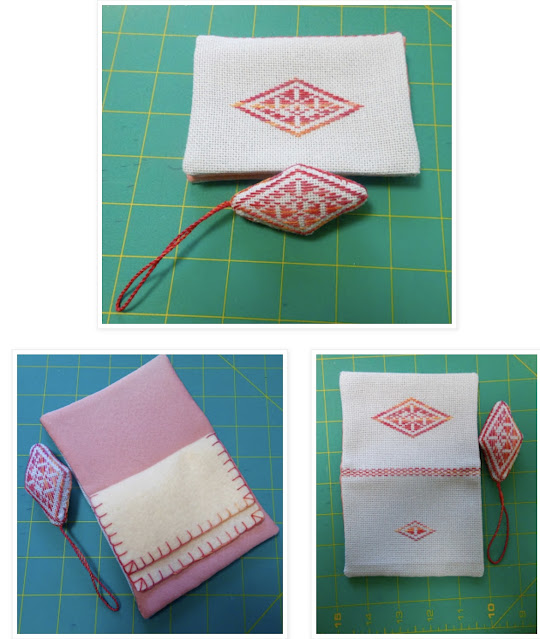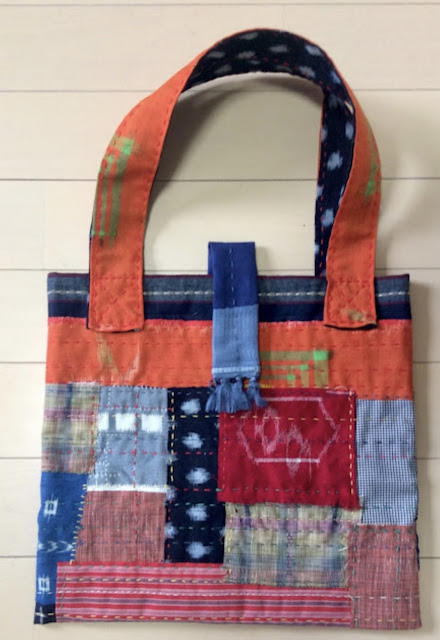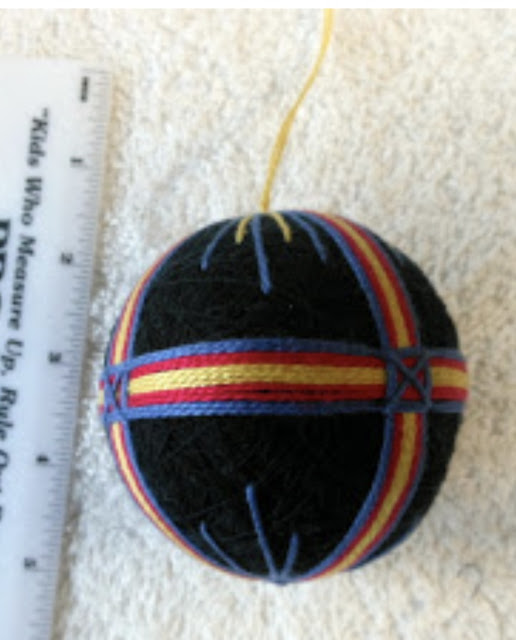Today is the Japanese National Holiday, Culture Day. Because November 3rd falls on a Sunday this year, the holiday will be observed tomorrow, Monday. This holiday is held for the purpose of promoting culture, the arts, and academic endeavor. Typical festivities include art exhibitions, parades, and award ceremonies for distinguished artists and scholars.
I’ve created my own Japanese stitching culture exhibit in this post to show some techniques I’ve learned or tried since moving to Japan. These are my own versions of these techniques.
Sashiko
Sashiko is a combination of two Japanese words: sashi (to stitch or pierce) and ko (small). Sashiko is a stitching technique originally used to patch and reinforce the indigo blue fabric garments worn by Japanese fisherman. Now it is more of a decorative technique than for a utilitarian purpose. The stitch is a running, or quilting, type stitch with the top part of the stitch longer than the underneath part. The key to making it beautiful is a consistent stitch length.
Kogin
Kogin is a traditional Japanese embroidery technique that hails from the great sashiko traditions of northern Japan, but unlike sashiko, is a counted thread technique. With running stitches in white cotton thread on dark indigo cloth, kogin is said to resemble snow scattered on the ground. It is stitched from side to side, counting over mostly uneven numbers of threads: one, three, five and, very occasionally, seven. Long stitches, avoided on the front of the cloth, may be present on the back, resulting in fabric almost three times its original thickness, trapping air for warmth.
Current project
Ainu stitching
The Ainu are the indigenous people of Hokkaido. According to Wikipedia, there were about 15,000 Ainu in Hokkaido in 1868. Because of intermarriage with the Japanese, there is no longer a pure Ainu ethnic group, but the official number of Ainu is estimated at 25,000 and the unofficial number at up to 200,000. In 2008, the Japanese government approved a resolution recognizing the Ainu people as "an indigenous people with a distinct language, religion and culture”. Although there is an Ainu language, most Ainu now speak Japanese or Russian. The language is considered endangered, with fewer than 100 people still speaking the language.
Boro
Boro refers to worn and useless textiles and old, torn, or patched clothes. Unlike today where people become affluent with goods, cotton textile was scarce for people 150 years ago. Especially it was not affordable for peasants living in rural coastal or mountain area, therefore, they applied traditional sticking technique called Sashiko onto linen clothes to retain warmth and to make it strong. At that time people never wasted the clothes, instead, they recycled them over and over through generations. Boro is intimately entangled with the family history and memory and takes on indescribable beauty and power.


























Thank you for the explanations of the different stitching, they all look wonderful.
ReplyDeleteI love your exhibit and examples. I really never knew any difference between them all so this was very informative. And that's a wonderful idea for a holiday.
ReplyDeleteYour collection of Japanese textile crafts is impressive.
ReplyDeleteThis is a wonderful cultural day event.
ReplyDeleteThe beautiful Japanese crafts you made are amazing. Also, I am learning deeply about the Japanese crafts I encountered, which is something I would definitely like to emulate.
This is my kind of culture! I love how so many Japanese crafting techniques have a practical background, but still are very pretty to look at. Now I wonder if there are any old traditional German crafts I could look into...
ReplyDelete